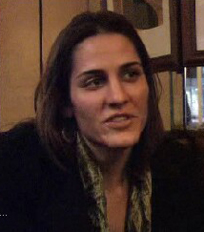Photographer Kathryn Cook explores the memory of the Armenian Genocide
\n
Photographer Kathryn Cook explores the memory of the Armenian Genocide –
\n
\n
Memory of Trees follows the remains and traces of an ambiguous, dark history—the great crime recognized today as genocide by more than a dozen countries. Kathryn Cook traveled across Turkey and Armenia, to Syria, Lebanon, and Israel, sifting through the remains of this legacy and tracking down survivors. Her images emphasize the emotional tonality of the story rather than documenting specific events.
\n
\n

is one of those books that’s almost impossibly hard to make. How do you take photographs of something as big as the Armenian Genocide? How do you even approach it? How can you possibly do such a topic justice? And how do you tell the story in the form of a photobook?
\n
The facts of the Armenian Genocide can be established fairly easily, the ongoing fights over what to make of them notwithstanding. But just like in the case of any genocide, when the sheer numbers approach hundreds of thousands or even millions our capacity to grasp what this might have meant breaks down.
\n
Imagine (or maybe remember) the pain caused by losing a very closed loved one. Then try to imagine that pain multiplied by one million.
\n
Or try to imagine a culture being uprooted from its land and made to disappear.
\n
But then isn’t photography the ideal tool to do this, given all its limitations, in particular its inability to show what can’t be shown? Aren’t photography’s limitations, when used well, exactly what can help us imagine things, what can help us try to get a better understanding, to the extent that it is possible?
\n
I want to think that because photographing around the Armenian Genocide would appear to be almost impossible – that is exactly because it has to be done. Photography’s various shortcomings mirror our own – taken together photography’s shortcomings and our own can help us approach a subject that on the surface looks so unapproachable (beyond historical facts and statistic).
\n
For Memory of Trees, Cook traveled to the parts of Turkey from which Armenians were uprooted and expelled. One hundred years later, “this land calls a return to the history of Armenians, this garden worked by their hands once,” the photographer writes. “The story of these gardens imparts instructions on remembrance; the more one tries to forget, the more one has to remember what to forget.” And: “The woman gives me a branch of a knowing tree, hung with silvery cocoons. The rings of memory recorded each year in its trunk, which defy the force of forgetting.”
\n
\n
\n
A family wishing to remain anonymous, seen at their home near Gerger, Turkey. The family has experienced discrimination for being Armenian, especially since they won their land back in a rare court case. Few of the family members live openly as Armenians. © Kathryn Cook
\n
\n
Photography always in part is an act done to do just that, to “defy the force of forgetting.” Even if what must not be forgotten can only be photographed in part or indirectly, it is the act itself that carries most of the weight. And this act is then matched by a viewer’s willingness to engage with the photographs.
\n
Seen this way, the act of photographing and the act of looking are what can help us try to understand something that might previously have been only a collection of facts too immense to register deeply.
\n
Memory of Trees, the book, thankfully is an initially modest affair. You can easily hold it in your hand and look through it. In other words, its makers resisted the temptation to create an object that would also physically heavy (think Joel Meyerowitz’sAftermath, which I’ve always felt was just way overdone). I have a few minor quibbles over how the book occasionally feels a little designy, but in the end the photography completely won me over.
\n
Looking at the book won’t do – the viewer is asked to feel what is in the pictures. And the book refuses to reveal itself in single viewings. The viewer needs to come back to it, so that subsequent exposure amplifies what was noticed earlier.
\n
\n
Ayşe Bal, estimated age 98 (in 2012), is seen in her home in Ağaçlı, Turkey. Ayşe’s mother, originally from the city of Muş, was hidden and saved during the Genocide. She was converted to Islam and later married a Muslim. © Kathryn Cook
\n
\n
Kathryn Cook
\n
American photographer. Lives in Turkey and Italy.
Kathryn CooK grew up in Albuquerque, New Mexico, and graduated from the Colorado University at Boulder in December 2001. Her professional career began with the Associated Press in Panama in 2003, but she left the agency in 2005 to pursue personal projects and do freelance work in Latin America. In September 2006, she moved to Istanbul and has since lived in both Rome, Italy, and Turkey. Her work has been published in numerous magazines such as The New York Times Magazine, Time, Stern, Newsweek, L’Espresso and D La Repubblica delle donne.
In 2008 Kathryn Cook received the Inge Morath Award for her project, «Memory Denied : Turkey and Armenian Genocide». This award is given annually to a female documentary photographer under the age of 30. The same year the Aftermath Project Award awarded her for her proposed story on the Armenian genocide.
\n


